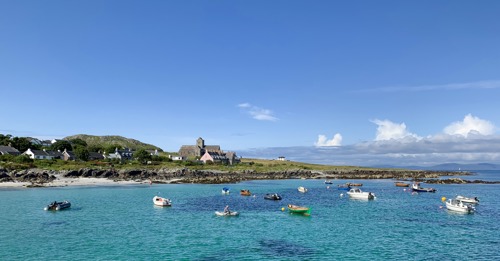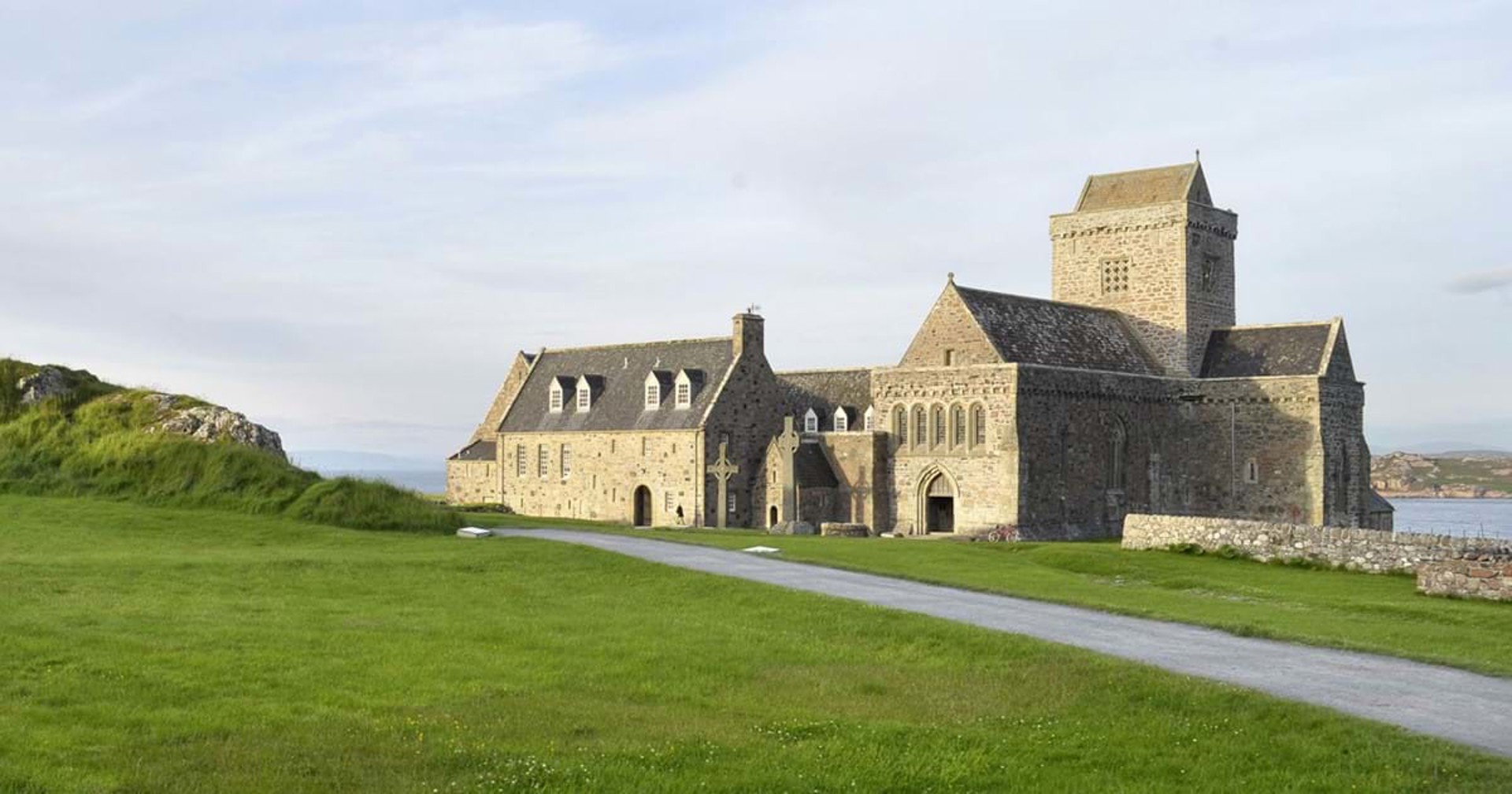Six Iona burials that tell the story of the British Isles!
Iona, the beautiful Hebridean island just off the southwestern tip of Mull, is just one and a half miles wide by three miles long. Despite its size, this small island has played a major role in Scotland’s history.
What lies hidden behind Iona Abbey
It’s home to Iona Abbey, one of Scotland’s most historic and sacred sites. The abbey was founded by St Columba and his Irish followers in AD 563 and became the cradle of Christianity in Scotland. Iona is also the final resting place for many of Scotland's kings.

1. Reilig Odhráin
The cemetery, Reilig Odhráin, sits just next to the Abbey. It’s reputed to hold the bones of sixty kings. An inventory of 1549 recorded 48 Scottish kings, eight Norwegian Kings, and four Irish Kings buried there. Unlike those of later medieval clan chiefs, none of the monuments marking the burial places of the kings have survived.
Despite the lack of physical evidence, it’s universally accepted that Reilig Odhráin was a royal burial ground between the 9th and 11th centuries. This was a time of conflict, struggle and union between the Picts, Gaels and Vikings; the period that saw the Kingdom of Scotland formed. The burial ground and the men buried here help tell the story of this fascinating period.
2. Niall Frossach
Niall Frossach (718–778) was an Irish king of Ailech and sometimes considered to have been High King of Ireland. His burial on Iona bears witness to the historical links between Scotland and Ireland, links which Columba was instrumental in establishing.
3. Kenneth MacAlpin
Kenneth MacAlpin (810-858) is one figure that looms large in Scottish history. He’s generally regarded as the founder of medieval Scotland, resisting Norse invaders and unifying the Gaels and Picts. His story is surrounded by myth and legend, but we know that between 839 and 848 AD, Kenneth claimed the kingdoms of the Picts and the Gaels.
4. Constantine I
The reign of Constantine I of Scotland (836-877), the eldest son of Kenneth MacAlpin, was marked by conflict with the Vikings. Constantine was beheaded in combat against the Vikings at Inverdorat and was buried near his father at Iona Abbey.
5. Amlaíb Cuarán
Amlaíb Cuarán (927 – 981) was a Norse-Gael King of Northumbria and Dublin. He was part of the Uí Ímair, the Norse Dynasty which ruled much of the Irish Sea region, the Kingdom of Dublin, the western coast of Scotland and some parts of Northern England, from the mid 9th century. His patronage of monasteries, retirement to Iona, and the Gaelic names given to some of his children illustrate how the Norse and Gaels gradually merged.
6. Grave of Macbeth
We all know Macbeth (1005-1057) as the murderer and usurper in William Shakespeare's tragedy. Still, in reality, this 'king of the Scots’ rule was marked by efficient government and the promotion and encouragement of Christianity. Malcolm Canmore killed him at the Battle of Lumphanan in Aberdeenshire (later Malcolm III).
The Abbey graveyard is also the final resting place of John Smith, the former Labour Party leader, who loved Iona. He was buried in the north-eastern extension in 1994. His grave is marked with an epitaph quoting Alexander Pope: "An honest man's the noblest work of God”.
Walk the Street of the Dead
The ancient kings would have made their final journey across the Sound of Iona, onto the harbour and along Sràid nam Marbh – the Street of the Dead - to Reilig Odhráin. You can still follow the wide cobbled track along which the coffins of kings and clan chiefs were once borne. Take your time to explore the rest of Iona. A restored 13th-century medieval abbey, founded by Benedictine monks, now stands on the site of Columba’s church. The Augustinian Nunnery, founded simultaneously as the Benedictine abbey, is equally peaceful.
